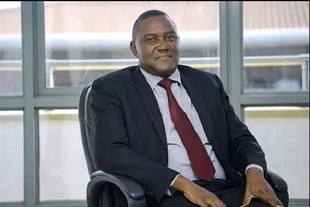By The Independent
Copyright independent

Kampala, Uganda | Insurance has evolved from simple community risk sharing to complex reinsurance, allowing insurers to spread large risks. But how are the continent’s largest projects protected? Isaac Khisa spoke with Stephen Chikovore, MD of UAP Old Mutual Uganda, and here is the excerpt.
Insurance, at its core, is about managing risk. It works on the principle of pooling resources from many people so that when an unfortunate event happens, the impact is spread and becomes manageable. Instead of one person bearing the full burden, it is distributed among many.
Take the example of an asset like Uganda’s newly constructed 600MW Karuma Hydro Power Plant. The project is worth nearly a billion US dollars. No single insurance company in Uganda or even in East Africa has the capacity to cover such a massive risk on its own. That is where reinsurance comes in.
As insurers, when we take on such a big risk, we pass on part of it to reinsurers. This means that behind the scenes, several partners are supporting us. For the customer, it looks simple, you buy a policy from your local insurer. But in reality, your risk may be shared across different insurers locally, regionally, and even internationally. For example, if I insure Karuma Hydro Power Dam, I may keep part of the risk in Uganda, share another portion with insurers in Kenya or Tanzania, and then send the remainder to reinsurers in global markets like London, China, or Europe. Sometimes, the same risk can be passed down through several layers—what we call fourth- or fifth-party reinsurance.
This global spread of risk ensures that even when a huge claim arises, no single company is crippled by the payout. What matters most to a customer is whether their insurer will pay when a claim arises. That’s the reason clients often ask to see the panel of reinsurers backing their insurer to ascertain financial strength behind the policy. Nobody wants to buy a policy from a company struggling to settle claims. Now, there’s an important debate happening across Africa: how do we retain more insurance premiums within the continent? Because every time we reinsure risks abroad, we also send money out of Africa. Retaining more premiums locally strengthens our economies.
For example, if reinsurers in Uganda or East Africa take up more risk, the premiums stay here, circulate in the local economy, and contribute to development. That’s why initiatives like Africa Re, established in Ghana, were created to keep more of Africa’s insurance money within Africa. Of course, capacity remains a challenge.
Many insurers in Uganda, for instance, have smaller balance sheets compared to their counterparts in Kenya, which limits how much risk they can retain without overexposing themselves. But with collaboration and growth in local reinsurance capacity, we can gradually reduce dependence on foreign markets.
At the end of the day, insurance is about giving people peace of mind. Whether it’s your car, your home, or your life, insurance allows you to focus on your daily business without worrying about the financial impact of unexpected events. And when risks are managed well—locally, regionally, and globally—everyone benefits.



